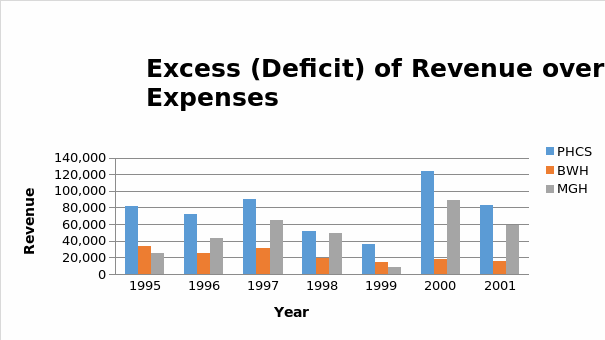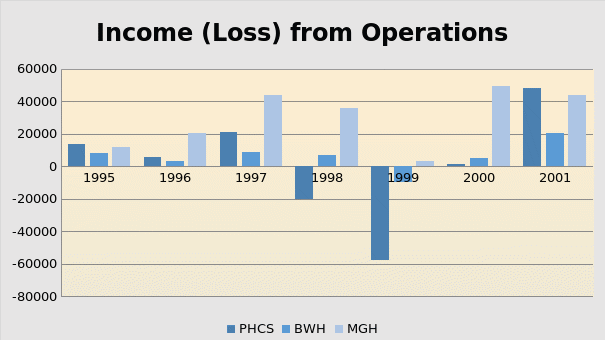Background of the Case
The organizations Brigham and Women’s Hospital (BWH) and the Massachusetts General Hospital (MGH) had a long co-existence in the Boston health care market. Both the organizations have built up a good reputation and have solid accomplishments to add up to their credits. In many respects, both the organizations can be considered as rivals competing for patients, physicians, students and education programs, research funding, and clinical acumen. Even though the organizations have competing interests, one common aspect among them is the respect that each one carried for the other. Both of them recognized their strengths and differences. The interesting point in the merger of the two organizations is that the members of the two organizations had schooled together and had some existing collaborative arrangements for clinical, research, or educational programs. In December 1993, the two organizations united into one under the name and style of MGH/Brigham Health Care System Inc. After the lapse of a certain period of time, in 1994, the Boards of BWH and MGH accorded their approval to designate the MGH/Brigham Health Care System Inc as to the sole member of the corporation and renamed the organization as Partners Health Care System Inc. (PHCS).
Organizational Structure
There exists a number of ways in which collaboration between two organizations can be formed. One of the configurations is to form total integration of the two organizations to form an altogether new entity being a holding company. Under this concept, the two organizations retain their original identity. But they merge the support systems and the like to garner more negotiating power and efficiencies. This is the method adopted in the formation of Partners Health Care System Inc. With this concept, it was possible for both BWH and MGH to retain their original identity. Education and research programs were consolidated as the only consolidation of them would make sense. In order to accumulate more financial gains, support services were consolidated since such a move would provide more gains. The capital and operating budget processes were also consolidated to make them uniform, and all the information systems were made consistent in both organizations.
Clinical Integration
In any health care collaboration, clinical integration is considered to be a linchpin by many of the leading experts in the field. According to Boston Consulting Group (1994), when the consultants are brought to any newly merged organization, their advice would be to make a complete clinical integration as well as the consolidation of all respective support services. But in the case of PHCS, the organizational leaders did not go in for the option to integrate the clinical services. They had decided to integrate only a few programs. The programs were decided based on strong and defendable reasons only. Therefore PHCS decided to have a selective approach to clinical integration, and both the organization decided to retain complete clinical services at their respective sites. However, they decided to share the best practices at all sites for bringing improvement in clinical efficiency. However, the decision to remain selective was also made due to the reason that it was believed that both the organizations would remain stronger only when they remain clinically complete and distinct.
Change Management
Greiner (1998) observes that it is for any management to consciously introduce a planned structure so that the organization is prepared for continued growth during the initial periods when the organization is in an evolutionary stage. It is also vitally important that the management should possess the characters of self-awareness and strong interpersonal skills that enable the management to communicate the vision and the compelling need for change to the organizational members. The success of PHCS depended on the evolutionary approach is adopted. The transition committee appointed at the time of the merger of both the organization worked on structuring the organization that would enable efficient change management. The recommendations of the committee were further refined by the managers and other functional leaders. The organizations capitalized on the presence of internal competitiveness to encourage people to work together. This has made many of the leaders of BWH and MGH choose to remain employed within PHCS or BWG, or MGH. In a nutshell, PHCS leadership has successfully addressed Gulati’s success factors and Mattessich Murray-Close et al.’s twenty success factors. Apart from achieving these success factors, the actions of PHCS leaders seem to correspond with the eight leadership process of Kotter.
Financial Analysis
The financial health of PHCS, BWH, and MGH has shown continuous improvements throughout the period of transition. Each organization has performed well in terms of financials by producing revenues in excess of expenses as well as better income from operations. The organizations have performed satisfactorily even during the difficult years in the health care industry, which had become more competitive in the post-collaboration times. The following table indicates the financial performance of the organizations. The audited financial results for PHCS, BWH, and MGH show the following results:
Excess (Deficit) of Revenue over Expenses

Income (Loss) from Operations

Conclusion
The reason behind PHCS choosing to follow a holding company approach is that the leaders at PHCS were aware of the power of the physicians, and they made a careful analysis of the costs and benefits of their decision. Their decision followed the observations of the Boston Consulting Group report, which contains an analysis of the economic areas of opportunity. The opportunities were found to be attractive with the consolidation of administrative operations. On the other hand, the consolidation of clinical services and support showed only moderate opportunities. It can be observed from the financial performance of PHCS that the holding company approach was the appropriate one to accomplish the goals of merger with the least amount of disruption. With this decision, the professional staff may not have any direct threat. Moreover, this approach also accomplishes the financial goals of the collaboration to be viewed as one entity from a managed care perspective. At the same time, the consumer would view them as separate organizations, which is ideal from a marketing point of view.
References
Greiner, L. E. “Evolution and Revolution as Organizations Grow” Harvard Business Review (1998): 3-11.
Gulati, R. (1998). “Alliances and Networks” Strategic Management Journal 19(4): 293-317.
Kotter, J. P. (1995). “Leading Change: Why Transformation Efforts Fail.” Harvard Business Review.
Mattessich, P. W., M. Murray-Close, et al. (2001). Collaboration: What Makes It Work: A Review of Research Literature on Factors Influencing Successful Collaboration St. Paul, Amherst H. Wilder Foundation.